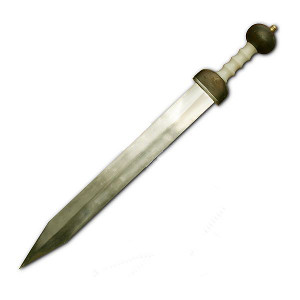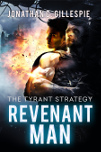Weapons That Changed the Course of History (And My Fiction), Part 1
December 21, 2012 in General Topics
Many of my books feature transformative technology–items whose creation and use reshaped the worlds they populate. This synchronizes nicely with my study of history.
I think understanding history really helps me write effective genre fiction. I have to keep an eye ever-focused on “what-if”? You could say that history is, in large part, a study of powers wielding–or reacting to–unexpected technological advances, and you’d be very accurate. In the same way, my fiction often takes place after those technological leaps, and almost always imagines nations unprepared for those changes. The human element is more important than the actual tech.
Today, I’m going to explain how certain weapons in human history impacted civilization, and we’ll have a little fun applying the same lens to items that appear in some of my own books. I’m not going for the obvious choices, either (did you really want to read another article on nuclear weapons? I think not). Let’s have more fun than that.
So, here we go!
Historical Weapon: The Roman Gladius

When discussing the Roman Empire, we have to keep in mind that this was a superpower that grew to dominate due to several intrinsic factors. Nobody did determination quite like the Romans. “A normal people,” as the podcaster Dan Carlin stated, “would have given up” when facing down the likes of Hannibal Barca. The Romans didn’t. They created one of the world’s first professional armies, and drilled it to a state of absolute discipline. They mastered the effective distribution of cereals–vital to their world-spanning logistics.
And beside every soldier’s side was the gladius.
At first glance, a gladius is underwhelming. It’s a short weapon, almost like an oversized dirk. It isn’t ornate, and generally isn’t visually impressive. It really isn’t outside the technological capabilties of most Roman opponents, either.
But it was the way this weapon melded with Roman tactics that made it so critical to the shaping of their empire. Yes, a barbarian looks really impressive swinging an axe or long sword in wide, sweeping arcs. But in the space required for that Barbarian to do his bloody work, the Romans could fit two, or sometimes even three men. That’s a lot of firepower coupled with really quick, stabbing attacks that were ideal for slipping into an enemy’s vulnerable spots.
The tight, well-organized legions that the gladius supported enabled the Romans to concentrate overwhelming force into a small pocket of troops. While it is true that this linebacker-like strategy occasionally backfired–most notably at Cannae–the Romans would have probably never had an empire for someone else to threaten without this weapon.
Fictional Weapon: Akita-type Hunter-Killer Drone

Much of The Tyrant Strategy: Revenant Man (the first book in the Tyrant Strategy series) takes place in Partana, which is a nation-state that’s formed from remnants of western Nebraska and southwestern South Dakota, due mostly to the raw will of its corrupt “Governor”, a man named Tate Moreno. Part of the reason no one has stopped Moreno is Partana forms a buffer between the rest of the country and Zone 6.
Zone 6: So named by Tak Akita, history’s greatest warlord, killed nearly a century earlier.
And why is Zone 6 so dangerous, you might ask?
When Akita and the United States went to war with each other, he was quick to devise an attack on his adversary’s continent. Akita reasoned that the Rockies could prove a natural location to seed his troops in the hopes of tying down U.S. forces that could have been deployed against him in Asia. But Akita didn’t want to invest huge formations in the campaign, as that would be counter-productive. Instead, he devised a battle plan: he wouldn’t fight to win in the Rockies. He would fight to demoralize, to sap.
To terrorize.
So, despite losses to his orbital units, Akita seeded massive numbers of weapons satellites over the continental United States. Rumors claim more than just satellites were involved, but in any case a wave of autonomous hunter-killer drones landed in the American heartland.
The drones were roughly spheroid and armed with mutilating weapons–like giant axes or buzzing sawblades–often super-heated in order to prevent infection in their chosen quarry. The idea was not to kill, but to wound and maim. Their targets? Civilians.
Akita’s plan was horrific, and completely successful. Hospitals were overloaded with innocent victims. The domestic health care system collapsed. Entire batallions were diverted from overseas deployment to address the drone menace. But even after Akita was defeated, the operations against his drones raged for decades.
Even all those years after Akita’s campaign, the drones are an obstacle faced by the novel’s protagonists (Reed Barowe and Ramelan Fujita).
I was inspired by the real-world cost of landmines to write drones into the story. And what do you know…mines are the next weapon on our list.
Historical Weapon: The Landmine

If there’s a weapon that’s become the bane of third world nations, it’s the landmine.
The goal behind this terrible invention was obvious: deny terrain to the enemy, or at the very least slow down a foe’s passage through said terrain. It would seem, at first glance, that these explosives are footnotes to other weapons used in warfare, weapons with more visible results. But nothing lingers quite like a landmine does.
Sea mines are bad enough–they’re still detonating WWII ordinance to this day–but children aren’t out in the ocean in rowboats. Innocent kids and families can and do fall prey to old landmines on a daily basis. These weapons have probably rendered more acreage permanently deadly, and done more damage to civilians post-conflict, than any other weapon, save disease (which we’ll get to).
Mines are the reality of war personified: there is nothing glamorous or noble about them. Mines maim and destroy lives. They remind those living in the aftermath of conflict exactly what happened all those years ago.
AThese buried threats propagate misery like no other weapon. One is forced to consider how many nations have had their development hobbled in part due to these explosions? Combat is bad enough, killing off so much human hope, and so many future contributions its casualties could have one day made. Mines do the same thing, but long after the fighting is over, and in a completely random fashion. Who knows how these weapons have really impacted the world?
Next time, we’ll cover more history-changing weapons, including the greatest weapon of all time–disease. And we’ll dabble more in some of the tech appearing in my books.
Stay tuned.

Recent Discussion